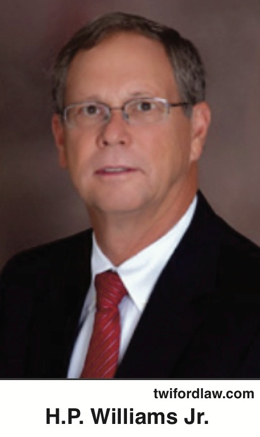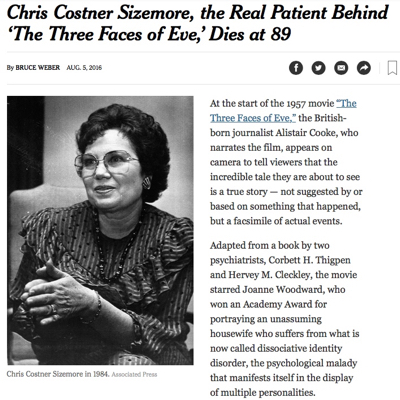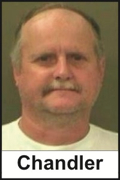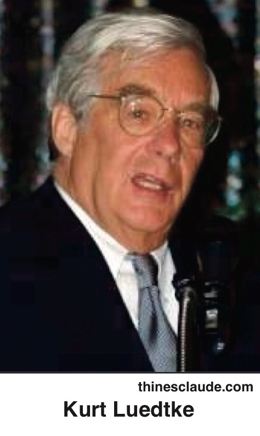Rascals case in brief
In the beginning, in 1989, more than 90 children at the Little Rascals Day Care Center in Edenton, North Carolina, accused a total of 20 adults with 429 instances of sexual abuse over a three-year period. It may have all begun with one parent’s complaint about punishment given her child.
Among the alleged perpetrators: the sheriff and mayor. But prosecutors would charge only Robin Byrum, Darlene Harris, Elizabeth “Betsy” Kelly, Robert “Bob” Kelly, Willard Scott Privott, Shelley Stone and Dawn Wilson – the Edenton 7.
Along with sodomy and beatings, allegations included a baby killed with a handgun, a child being hung upside down from a tree and being set on fire and countless other fantastic incidents involving spaceships, hot air balloons, pirate ships and trained sharks.
By the time prosecutors dropped the last charges in 1997, Little Rascals had become North Carolina’s longest and most costly criminal trial. Prosecutors kept defendants jailed in hopes at least one would turn against their supposed co-conspirators. Remarkably, none did. Another shameful record: Five defendants had to wait longer to face their accusers in court than anyone else in North Carolina history.
Between 1991 and 1997, Ofra Bikel produced three extraordinary episodes on the Little Rascals case for the PBS series “Frontline.” Although “Innocence Lost” did not deter prosecutors, it exposed their tactics and fostered nationwide skepticism and dismay.
With each passing year, the absurdity of the Little Rascals charges has become more obvious. But no admission of error has ever come from prosecutors, police, interviewers or parents. This site is devoted to the issues raised by this case.
On Facebook
Click for earlier Facebook posts archived on this site
Click to go to
Today’s random selection from the Little Rascals Day Care archives….
Click for earlier Facebook posts archived on this site
Click to go to
Today’s random selection from the Little Rascals Day Care archives….
It’s not just politics that make strange bedfellows
 June 23, 2014
June 23, 2014
“The emphasis has got to be on the crime. Once you start using labels like satanic, sadistic or ritualistic, then you’re immediately raising a red flag…. Law enforcement, prosecutors, judges, mental health professionals and especially the general public begin to back off, because it’s so hard to believe these things happen…. We emphasized rape, sex offense, indecent liberties, crimes against nature…Those were the crimes that Bob Kelly was convicted of, those are what the jury heard evidence of….
“We let the defense attorneys bring out the sadistic and ritualistic….”
– From District Attorney H. P. Williams Jr.’s address to “From Heartbreak Through Healing: Facing the Reality of Sexual and Ritual Abuse of Children,” the first national convention of Believe the Children (April 2-4, 1993, in Arlington Heights, Ill.)
I transcribed Williams’ cautionary prosecutorial advice from audiotapes, so I can only imagine the scene on the speakers’ dais he shared with not only one of the Little Rascals mothers, but also Laura Buchanan, author of “Satan’s Child: A Survivor’s Story That Can Help Others Heal from Cultic Ritual Abuse.”
What must have Williams been thinking as Buchanan earnestly recalled that:
“We stood poised with knives in an incomprehensible world where children killed children…. Permitted to live until age four (my sister) was sacrificed by my parents…. My final programming, as a teenager, occurred on an autopsy table in the coroner’s office. A surgical procedure was staged and through a small incision in my scalp I was told that a surveillance device would be inserted into my brain. The supposed implant would be used at national headquarters to continuously monitor my thoughts. For decades the programming was extremely effective. Until the age of 44, I had no idea that my parents practiced satanism….”
With Bob Kelly and Dawn Wilson locked away, and the overturning of their convictions still two years away, DA Williams was riding high. But surely he must have experienced the slightest frisson of doubt when he saw Buchanan’s patent insanity being swallowed whole by the same audience that so enthusiastically applauded his case against the Edenton Seven.
Perhaps N.Y. Times needs some new experts
 Aug. 6, 2016
Aug. 6, 2016
It’s appalling to see the New York Times, in its Aug. 5 obituary on Chris Costner Sizemore, “the real patient behind ‘The Three Faces of Eve’, quote as experts Dr. Colin A. Ross and Dr. Richard Kluft, psychiatrists who validated and promoted the “satanic ritual abuse” moral panic of the 1980s and early ’90s.
For decades Dr. Ross has spun out cockamamie ideas from supernatural “eye beams” to CIA conspiracies. And as recently as a 2009 interview on CBS “Sunday Morning,” Dr. Kluft confidently posited a nationwide epidemic of undiagnosed cases of “multiple personality disorder”:
Tracy Smith: So do you think that there are, what, thousands of people walking around out there with MPD who don`t even know it?
Kluft: Oh, easily.
Smith: Tens of thousands?
Kluft: Easily.
Smith: Hundreds of thousands?
Kluft: Easily.
Smith: Millions?
Kluft: We might be at that level.
Do Ross and Kluft really provide the kind of authority the Times needed for this story?
The full obituary on Chris Costner Sizemore is here, cached here.
![]()
25 years of wrongful imprisonment – and counting
Jan. 23, 2012
Last week I visited Avery-Mitchell Correctional Institution in Spruce Pine to talk to Junior Chandler, who soon will have served 25 years on charges strikingly similar to those in the Little Rascals case.
Junior, now 54, may well be the last still-imprisoned victim of the ritual-abuse contagion that swept the nation’s day cares in the ’80s and early ’90s.
I’ll be updating his case soon.
 In Junior’s former life in the mountain town of Revere, he told me, he was close to his parents, his wife and two boys, his two brothers.
In Junior’s former life in the mountain town of Revere, he told me, he was close to his parents, his wife and two boys, his two brothers.
Early on, he and his brothers helped their uncle grow tobacco and corn. Before driving a van for the Madison County Day Care Center, he had worked for the Forest Service, the Department of Transportation and Southern Railroad. At least one job he gave up because it interfered with his softball tournaments and night fishing.
In prison, visits from his family became less frequent, and eventually his wife filed for divorce. “Two life sentences,” Junior says. “She couldn’t wait, you know.” And his sons couldn’t keep watching him aging away in his prison grays.
When his father died in 1997, he attended the funeral in handcuffs. He worries about his mother, who recently suffered a stroke.
He sleeps in a bunk bed in a dorm with 33 other inmates. His assigned janitorial job is cleaning meal trays. For relaxation he plays volleyball and horseshoes, watches Westerns on TV, reads a little. His only write-up was a scuffle not long after he arrived. “It’s learning to walk away and how to carry yourself,” he says.
Of course I was touched by Junior’s deep sadness and resignation. Sometimes I find it too easy to minimize the emotional havoc wrought by incarceration of the guilty – just imagine what it must be like for the innocent.
What might’ve been: Nancy Lamb at the multiplex
 May 30, 2015
May 30, 2015
Ofra Bikel’s eight hours of “Innocence Lost” were surely powerful, but the narrowness of PBS’s audience limited their impact. What if the Little Rascals Day Care case had also inspired a major theatrical release? What if several million moviegoers had watched the dramatic nobody-dunnit even as the real-life Edenton Seven were languishing in jail or standing trial?
For a brief moment, that seemed possible.
Kurt Luedtke, screenwriter for the ’80s hits “Out of Africa” and “Absence of Malice,” was outraged after seeing the initial “Innocence Lost” in 1991. “You can’t hold people that long without presenting the evidence,” he told the Charlotte Observer.
Now retired and living in Michigan, Luedtke recalls his “indignation mounting and (thinking) I had to do something about the preposterousness of what was going on….”
Alas, his idea apparently made it no further than a preliminary meeting in New York with Bikel and “Frontline” founder David Fanning: “I can’t remember why we didn’t go forward; maybe I had another job.”











0 CommentsComment on Facebook